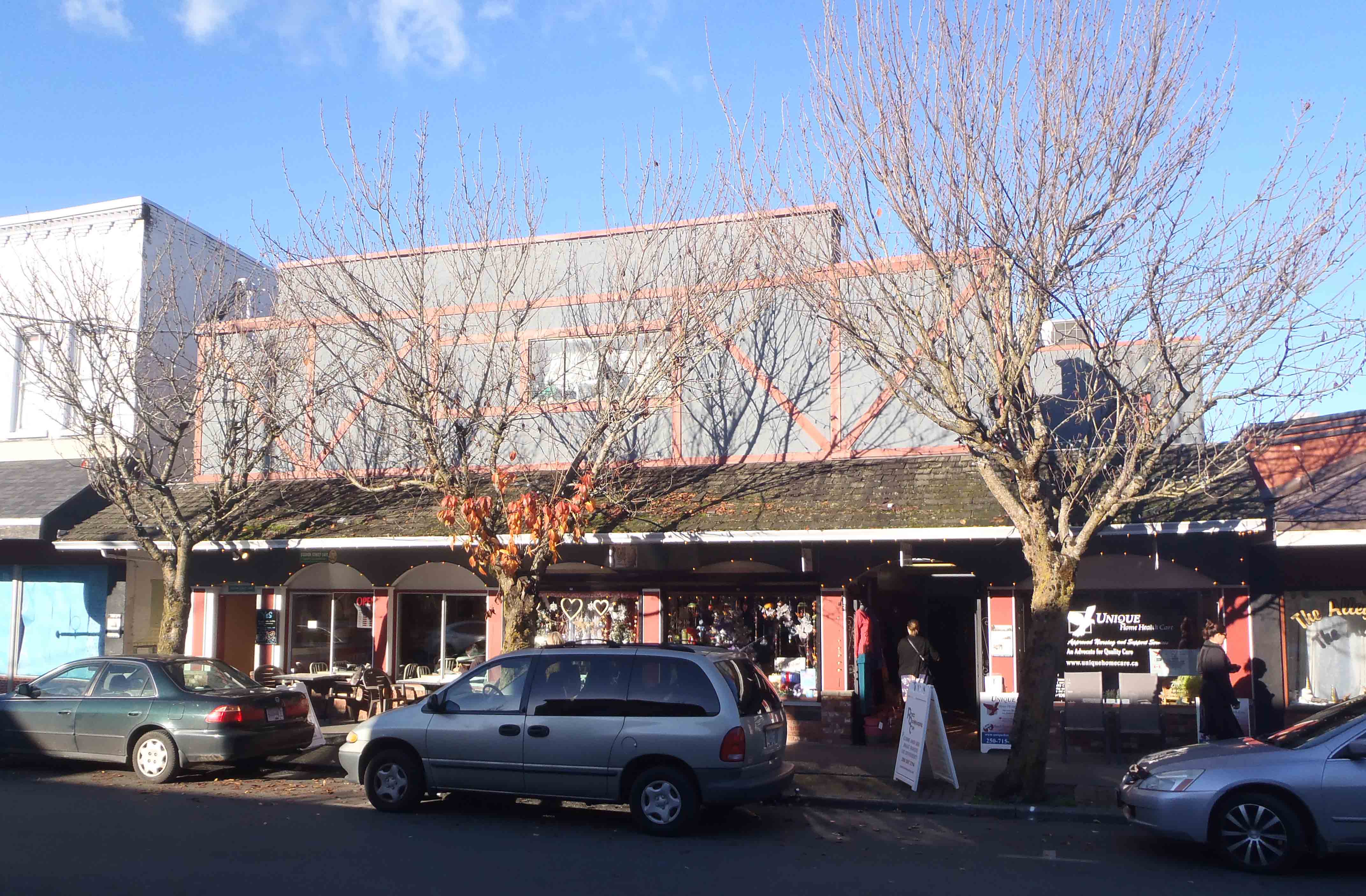Downtown Duncan
Station Street – 121-127 Station Street
The building at 121-127 Station Street was originally built in 1925 as the Capitol Theatre. It became better known in later years under the name “Odeon Theatre.” It was used as a movie theatre under the name Odeon Theatre until 1983, when it was sold to new owners and converted to its present use as a retail, commercial and office building.

Here is map showing the location of 121-127 Station Street:
Here is a Google Street View image of 121-127 Station Street:
Additional Information on 121-127 Station Street
- Assessed Value (July 2018): $586,000; Land – $279,000, Buildings – $307,000
- Assessed Value (July 2017): $571,000; Land – $265,000, Buildings – $306,000
- Assessed Value (July 2016): $477,000; Land – $246,000, Buildings – $231,000
- Assessed Value (July 2015): $450,000; Land – $236,000, Buildings – $214,000
- Assessed Value (July 2014): $450,000; Land – $236,000, Buildings – $214,000
History of 121-127 Station Street
Prior to this building being built in 1925, this lot was occupied by Grassie’s Blacksmiths. A horse shoe had been embedded in the concrete sidewalk in front of 121 Station Street as a reminder of the site’s blacksmithing heritage.
The present building was built in 1925 and opened as the Capitol Theatre in July 1925. It was owned and financed by the Duncan Theatre Company, which was, in turn, largely owned by J.H. Whittome & Co. Ltd., which purchased the Whittome Building in 1934.
When the Capitol Theatre first opened in 1925, it was only able to show silent movies. The first feature film on the Capitol Theatre’s opening night was I’ll Show You The Town, a Universal Pictures release starring Reginald Denny, Cissy Fitzgerald and Marion Nixon.
As an indication of the movie theatre technology of the time, the July 1925 stories in the local Cowichan Leader newspaper announcing the Capitol Theatre’s opening raved that “the screen itself is 10 feet by 13 feet 6 inches and is equipped with a shadowbox (resembling a frame) which effects a deepening of the picture” and that the theatre “has bought two of the very latest projection machines – 6B Improved. There will henceforth be no halt for changing reels….”
In 1929-30 the Capitol Theatre underwent a major renovation to allow it to feature “talking pictures.” The architect supervising the Capitol Theatre’s conversion from silent movies to talking pictures was Vancouver based Harry Holdsby Simmonds (1893-1954), who also designed the Odeon Theatre in Victoria in 1947-48. The local building contractor on the 1930 conversion was Edward W. Lee, later Mayor of Duncan. The first talking picture shown at the Capitol Theatre (and, as far as we know, the first talking movie shown in Duncan) was the 1929 Academy Award winner for Best Picture, The Broadway Melody, shown here in February 1930.
As an indication of 1930 movie technology, the Cowichan Leader reported that the conversion “embodies all the latest improvements, some so new that even the large city theatres have not got them.
In the projection room there are two machines, both similarly equipped. Each requires a separate operator. Formerly [only] one operated the two silent picture machines. The new machines are entirely different from the old, with the exception of the lamp and head…….
On the sound film is a sound track, one tenth of an inch wide, running alongside one of the sets of sprocket holes. The sound is produced by the focusing of light through the negative sound track onto a photo-electric cell which is light-sensitive in action. From there the sound passes through seven stages of tube amplification before being carried to the horn, which is fixed to a large stand on the stage, back of the screen.
The horn is five feet across by four feet in height and is claimed to be far better for sound effects than other systems in that it gives more efficient distribution and better results on very high or very low frequencies….”
In the 1950s there was another upgrade of the building to install a wider screen and increase the seating capacity from 450 to 727 seats.
Between 1925 and 1961 this building was owned by Duncan Theatre Ltd., of which J.H. Whittome & Co. was a leading shareholder. Duncan Theatre Ltd. leased the building to other firms, which ran the actual theatre operations.
In 1961, Duncan Theatre Ltd. sold this building to Odeon Theatre Canada Ltd., which had been leasing the building since 1941 and had been operating it as the Odeon Theatre.
Odeon Theatre Canada Ltd. continued using this building as the Odeon Theatre until 1983, when the theatre was closed. This may have been due to the then new trend toward multi screen facilities, pioneered in Canada by Cineplex, and the difficulty of converting this building to a multi-screen theatre. In 1984, Cineplex purchased Odeon Theatres Canada Ltd. and became Cineplex Odeon.
After the Odeon Theatre closed in 1983, this building was sold by Odeon Theatres Canada Ltd. and the new owners converted it to its present use as retail and office space.
Would you like to leave a comment or question about anything on this page?